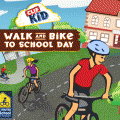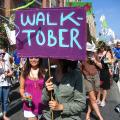
Resource Library
 Sustaining a Safe Routes to School program is on everyone’s mind.
Sustaining a Safe Routes to School program is on everyone’s mind.

 In my last post, I shared some of my aspirations for the great state of Mississippi with regard to the advancement of Safe Routes to School initiatives around the state.
In my last post, I shared some of my aspirations for the great state of Mississippi with regard to the advancement of Safe Routes to School initiatives around the state.
Superheros Among Us: Last week I had the pleasure to attend a New Jersey Partnership for Healthy Kids strategic planning meeting where I got to meet many of New Jersey’s real life superheroes. If you were there, you know that as part of the introductions, we all got to declare what our super power would be if we had one. They were all noble.
Since 2017, the Safe Routes Partnership has partnered with community-based organizations, government agencies, and other national partners to improve local park access via walking and biking. In those seven years, we have shown that there is significant demand to unlock the full potential of neighborhood parks for health and community building by activating the routes to them. Along the way, this movement has highlighted the power of engaging parks and recreation stakeholders in creating safer, more equitable streets, ensuring that parks are integral to connected, thriving communities.
 A couple of exciting Pro Walk/Pro Bike® Conference updates (September 10-13 in Long Beach, CA)! First, check out their new website – everything is so easy to find, including their recently released program.
A couple of exciting Pro Walk/Pro Bike® Conference updates (September 10-13 in Long Beach, CA)! First, check out their new website – everything is so easy to find, including their recently released program.
 In my first blog post, I indicated the Greater Washington, DC area regional network brought the unique challenge of encompassing two states and a federal district.
In my first blog post, I indicated the Greater Washington, DC area regional network brought the unique challenge of encompassing two states and a federal district.

NOTE: An update on the outcome of this vote follows the original post.
I realize you might think I am being a bit premature with this declaration, but I am not talking about the November elections. I am referring to a critical vote—a referendum—in Georgia that will influence the direction of transportation funding in the coming years.
 Like many organizations, we at the Safe Routes to School National Partnership like to have data to back up our opinions.
Like many organizations, we at the Safe Routes to School National Partnership like to have data to back up our opinions.

 As we all head back to school, it is exciting to see more and more children and families walking and bicycling to school each morning.
As we all head back to school, it is exciting to see more and more children and families walking and bicycling to school each morning.
 Ever wondered how effective Safe Routes to School programs are at increasing walking and bicycling to school? A new multi-state study gives a resounding answer to that question.
Ever wondered how effective Safe Routes to School programs are at increasing walking and bicycling to school? A new multi-state study gives a resounding answer to that question.

Residents of Centerville, SD, gathered in the warm prairie sunshine on a Saturday in September to celebrate completion of the first phase of a Safe Routes to School project. New sidewalks, curb and gutter, ADA curb ramps and traffic signs now make walking to school safer for school kids of all ages in this rural eastern South Dakota community of 882 people. New Safe Routes to School-funded programs to encourage walking to school are boosting the number of who do just that.
 Happy Walktober!
Happy Walktober!

GIS mapping examples of poor siting decisions are used to help the reader understand the importance of making better school site decisions using a collaborative, data informed, objective process.
 Over the last few months, a great deal of momentum and synergy has been built around schools and communities initiating joint use (or shared use) agreements, which allow for the sharing of property between two entities to increase physical activity and improve nutrition among their residents. Although these efforts are good and collaboratio
Over the last few months, a great deal of momentum and synergy has been built around schools and communities initiating joint use (or shared use) agreements, which allow for the sharing of property between two entities to increase physical activity and improve nutrition among their residents. Although these efforts are good and collaboratio
To facilitate conversations between peer cities, NACTO holds roundtables, workshops, and webinars and conducts research on best practices and challenges for the growing bike share movement.

